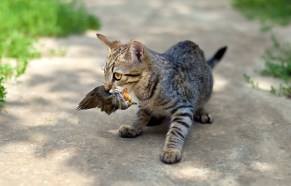
Life sciences writer Susan Milius has been writing about botany, zoology and ecology for Science News since the last millennium. She worked at diverse publications before breaking into science writing and editing. After stints on the staffs of The Scientist, Science, International Wildlife and United Press International, she joined Science News. Three of Susan's articles have been selected to appear in editions of The Best American Science Writing.

Trustworthy journalism comes at a price.
Scientists and journalists share a core belief in questioning, observing and verifying to reach the truth. Science News reports on crucial research and discovery across science disciplines. We need your financial support to make it happen – every contribution makes a difference.
All Stories by Susan Milius
-
 Life
LifeHow mammals grow ears: With a flaw
A newly discovered rupture-and-repair process that occurs in embryos could explain a lot about infections and hearing defects.
-
 Life
LifeDisease threatens garden impatiens
Surprising scientists, once-mild downy mildew has struck the popular blooms in 33 states.
-
 Animals
AnimalsNative pollinators boost crop yields worldwide
Farms with crops from coffee to mangoes don’t get the best yields if they rely solely on honeybees.
-
 Animals
AnimalsHow weaver ants get a grip
Strong sticking power and quick reaction time help the insects stay put in trees.
-
 Life
LifeBees learn the electric buzz of flowers
Floral electric fields could join color and fragrance as cues to pollinators.
-
 Animals
AnimalsSea slug carries disposable penis, plus spares
A hermaphroditic gastropod sheds its penis after one use, then uncoils another.
-
 Animals
AnimalsCompared with rodents, bat species carry more viruses
Viruses that can jump from animals to people may find the flying mammals a fine place to lurk.
-
 Animals
AnimalsCats kill more than one billion birds each year
New analysis doubles estimate of avian death tolls, revealing that hunting felines take bigger bite out of wildlife than expected.
-
 Animals
AnimalsDung beetles steer by the Milky Way
The insects orient themselves using starlight, researchers find in planetarium experiments.
-
 Animals
AnimalsFinally, the truth about barnacle sex is revealed
A genetic analysis shows that the sessile crustaceans can broadcast sperm in water, contrary to previous assumptions.
-
 Animals
AnimalsIntegrative and Comparative Biology
The hormonal roller coaster that is male pipefish pregancy and collision safety features for flying insects.
-
 Health & Medicine
Health & MedicineLittle Mind Benders
Parasites that sneak into the brain may alter your behavior and health.